|
KLONDIKE GOLD RUSH
SKAGWAY, DISTRICT OF ALASKA — 1884-1912: Building the Gateway to the Klondike Historical and Preservation Data |

|
Part II
BUILDING THE DREAM

|
| F. H. Clayson & Co. Yukon Outfitters, 1898. (Photo courtesy of Suzzallo Library, University of Washington, Seattle) |
Chapter 5
BUILDING CHARACTERISTICS
An observant pedestrian in Skagway might note the town's general feeling of orderliness and symmetry. In Skagway's heyday, this overall orderliness was broken by clutter along the boardwalks. To walk from one end of the street to the other, the pedestrian's path would meander: around fruit crates at Rapuzzi's store, by the sandwich sign at the Alaska Steamship Office, under the canvas awnings — some with signs on them, and through a host of spaces defined by the overflow and overhangs, openings and closings, of each narrow building. Because the ground floors of these buildings contained large windows, the solid wall of the building fronts disappeared as people peered into the shops. This open and closed space experienced by the pedestrian is what architects call building rhythm.
This particular rhythm is only one of the many architectural components which make Skagway distinctive. An observer might also notice that the town's buildings have symmetry — an architectural feature of the Victorian era which helped to give a sense of order to what was a chaotic period. To illustrate, draw an imaginary line down the center of the Mascot Saloon, or most any other store front for that matter, and note that one half of the facade would be just the same as the opposite half. Occasionally this center line of symmetry would shift from floor to floor, but each level had its own symmetry. The structural proportion is also noteworthy: the buildings of Skagway appeared tall and thin, the buildings of today seem short and wide.
The visual architectural components which make Skagway unique are many. Historical architect Randall Copeland of the National Park Service, Denver Service Center, analyzed historic photographs and drawings; he prepared the following discussion of design components and building characteristics to aid the construction of contemporary structures — including additions and modifications — to be in harmony with the existing historic structures of Skagway. This analysis is included here to provide a more technical understanding of the Skagway streetscape.
ORIENTATION
In August-September 1897, Frank Reid surveyed Skagway into 50- by 100-foot building lots. Because land was expensive, entrepreneurs purchased only the required frontage for their proposed buildings. This often resulted in several structures per lot. Buildings were generally long and narrow, abutted one another, and fronted the property line.

Fences or false walls filled gaps between buildings, giving the streetscape a definite linear quality. This quality still exists today.

RHYTHM
As in music, a streetscape's rhythm is defined as the patterns of arrangement — the recurrence and the relation of part to part and parts to the whole. Two scales of rhythm exist, one richly variable (building mass to sky) and one following consistent logic (facade mass to openings).

In general, horizontal lines such as roof lines and cornices vary. As buildings historically abutted one another, no void relationship existed except at intersections. Where a small passageway did exist between two buildings, a fence enclosed this gap.
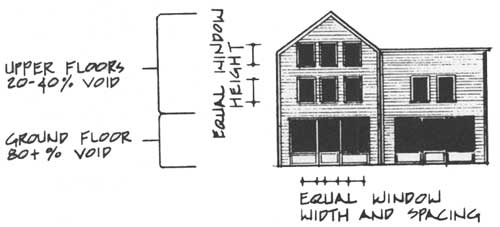
The pattern of doors and windows gives a streetscape much of its character. Ground floors had large windows, to attract shoppers, spanning the entire facade and usually topped by equally wide transom windows. These windows took up better than 80 percent of the first floor facade. Small, multi-pane windows characterized early 1897-98 Skagway but were replaced as quickly as possible by larger "French plate glass" display windows. The upper floors had fewer windows, but they were equal in size and evenly spaced from floor to floor. They covered from 20 to 40 percent of the facade.
PROPORTION
Proportion is the relationship between a building's width and its height (expressed in mathematical terms: 1:2 equals 1 unit in width to 2 equal units in height). Historically, commercial buildings in Skagway never exceeded three stories; two stories was the predominant height. Currently, the Historic District ordinance limits building height to 35 feet.
Expensive street frontage land resulted in primary facades being vertical in emphasis; and the proportions of windows and doors reinforced this verticality. The varied proportions of building facades gives the streetscape much of its character: within the Historic District this proportional relationship ranges from 1.7:1 to 1:2, the average proportion is 1:1.2.
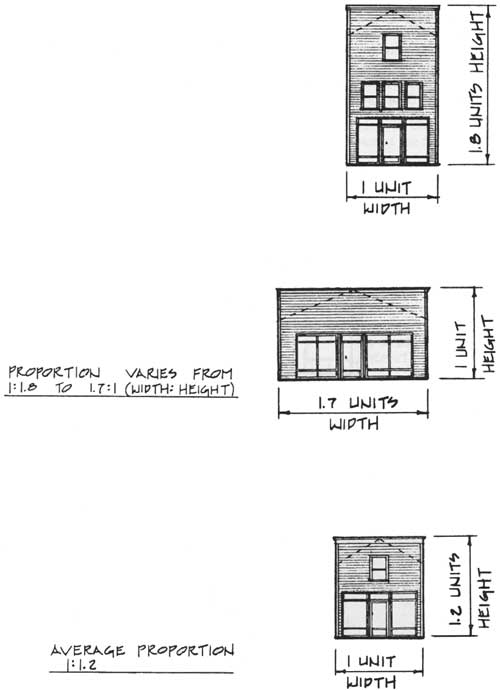
SYMMETRY
Facades were generally symmetrical around a center, imaginary axis. Design elements were spaced equally from this line. This principle of symmetry varied where the facade had a secondary doorway to the upper floors, at which point the axis shifted at the ground floor.
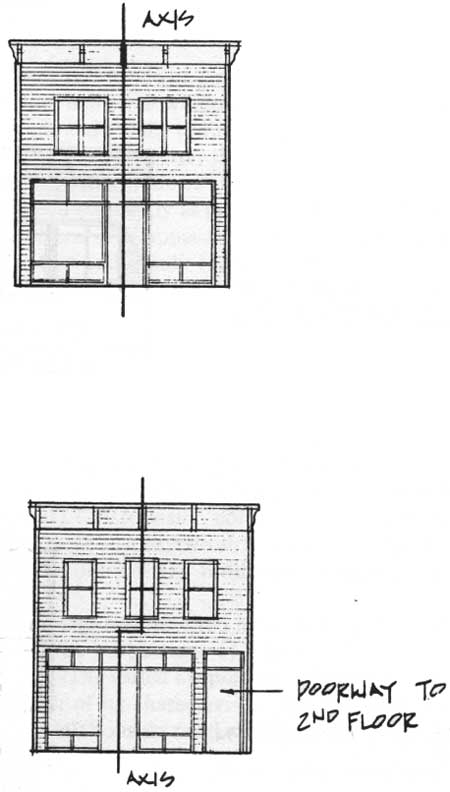
ROOF SLOPE
Most of the rooflines in Skagway were hidden behind false fronts. Whether visible or hidden, they were shed or gable roofs. Occasionally, false gables or portions of the gable roof were a part of the facade.

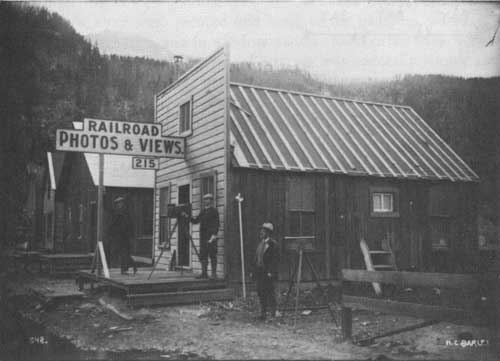
|
| H. C. Barley and his camera in 1898. His photographer's studio has the typical shed roof with a false front. |
STOREFRONT ENTRYWAYS
There were four basic types of storefront entryway designs in Skagway. All of them had three bays — two window display bays divided by one door bay.
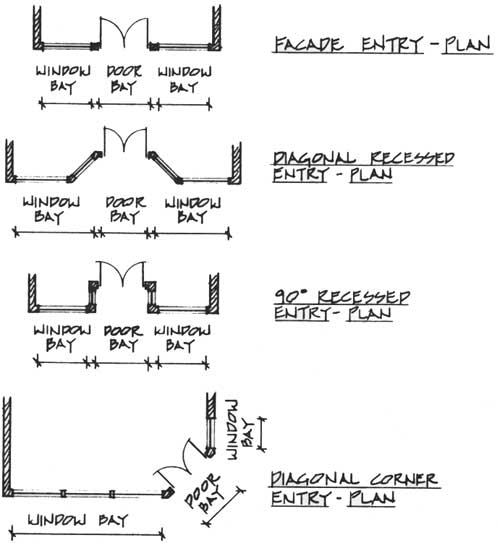
MATERIALS
Wood and glass were the predominant building materials. Board-and-batten exterior siding ran vertically; drop and clapboard siding ran horizontally. To a lesser degree, corrugated metal was used for roofs, facades, and siding.
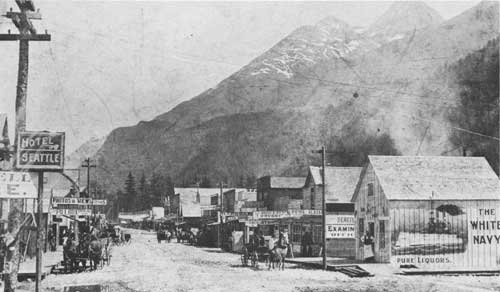
|
| Skagway with its plethora of signs in June 1898. (Photo courtesy of Historical Society of Seattle and King Country) |
SIGNS
Historic Skagway had a rich variety of signs, primarily pedestrian oriented. Signs were painted on doors and windows, facades, siding, and roofs; they were painted and hung across parapets, porches, awnings, overhangs, and in window panels. Most often they were on wood, occasionally on canvas. Lettering was generally simple and bold; upper case lettering predominated. Skagway residents have been true to this tradition; and they continue to use a wide variety of sign types and print, some of which are historic reproductions.
PAINTING
In general, Victorian architecture had colorful painting schemes chosen to accentuate a building's design and details. Initially, dark, rich "muddy" colors (browns, reds, olives, grays, greens) were used; these were gradually changed to pastels and white into the twentieth century. The "trick" was to enhance the building's best features without calling attention to the effort and to avoid becoming overly ornate. In general, the simpler the building, the fewer the colors.
ARCHITECTURAL ELEMENTS
Within the broad outline of the previously discussed design components — orientation, rhythm, proportion, symmetry, roof slope, store front entryways, materials, color and signage — it is the architectural details and elements which give the historic district much of its character. False fronts, cornices, brackets, horizontal siding and corner boards all have a dominant impact. The following glossary and sketches may help in the understanding of these architectural details.
BALUSTRADE
A railing system used along the edge of a porch or balcony.

BARGEBOARD
A board which hangs from the projecting end of a roof, covering the gables.

BAY WINDOW
A window or series of windows projecting from the wall and forming an extension of the interior space.

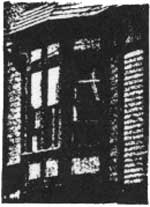
BELT COURSE
A horizontal course encircling a building or running across a facade.

BOARD AND BATTEN
A wall or roof finish system in which a strip of wood is placed over the joint between adjacent boards.

BRACKET
A decorative member projecting from a wall designed to support, or appear to support, a projecting vertical load acting outside the wall.

BROKEN PEDIMENT
A pediment, the sides of which stop before they intersect.

CLAPBOARD SIDING
A type of horizontal wood siding with the lower, thicker edge of each board overlapping the thinner top of the board below it.
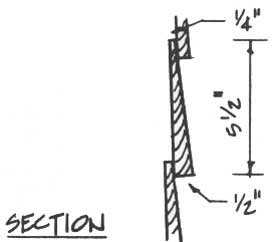
CORBEL
An architectural element that projects from a wall and supports a vertical load from above.

CORNER BOARD
A trim board used on the external corners of a wood frame building to give it a finished appearance and to protect the end grain of the siding boards from moisture.

CORNICE
The exterior trim projection which finishes the top part of a wall.

CORNICE RETURN
The area of a cornice which continues around the corner of a building rather than terminating at the edge.

DENTIL
One of a series of small projecting, ornamental rectangular blocks, usually under a cornice. Their use in Skagway is limited.

EAVE
The lower edge of a sloping roof that overhangs a wall.

FACADE
In architecture, an exterior face of a building, especially the front or most important face.

FALSE FRONT
The vertical extension of a facade to "hide" the roofline behind the rectangular face.
FINIAL
A crowning, ornamental detail.

FISHSCALE SHINGLES
Shingles cut with a scalloped edge.
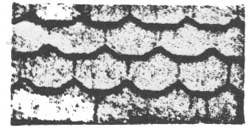
GABLE ROOF
A double-sloped roof forming a triangle at the ends of the building.
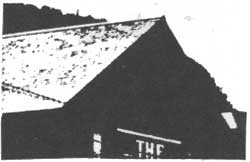
GABLED ENTRY
An entryway crowned by a triangular pediment.
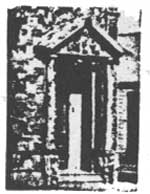
LATTICE WORK
A reticulated or net-like work formed by the crossing of laths, or narrow, thin strips of wood, normally in a rectangular pattern.
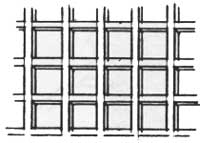
MANSARD ROOF
A roof having two slopes with the lower slope steeper than the upper one.

MULLION
A vertical member separating panes of glass in a window or door.
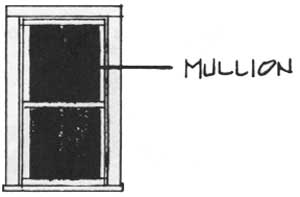
ORIEL WINDOW
An upper story bay window corbeled out on a bracket or corbel.
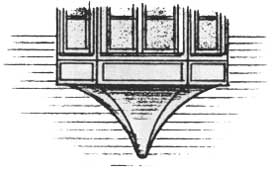
PARAPET
A low wall rising above a platform or flat roof.

PEDIMENT
The triangular gable end of a roof above the horizontal cornice or a decorative space over windows or doors.
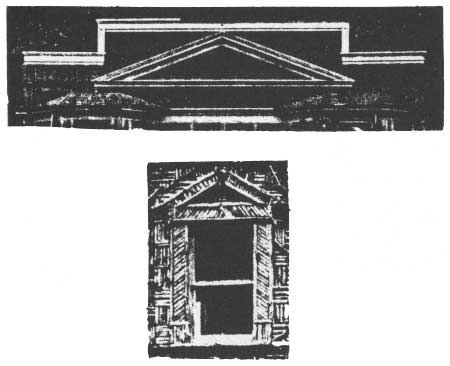
PILASTER
An engaged pier or pillar, or a decorative feature simulating a pier or column, constructed as a slight projection beyond the plane of a wall.

RAISED BASE PANEL
A rectangular wood panel with a center raised panel, located below a ground floor window.

RECESSED BASE PANEL
A rectangular wood panel with a recessed interior panel, located below a ground floor window.

RECESSED ENTRANCE
An entrance to a building, recessed beyond the plane of a wall.
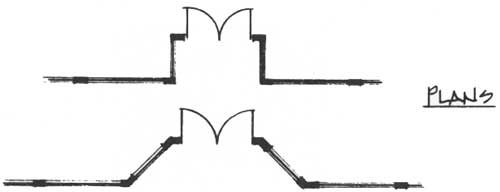
SASH
The movable framework of a window.
1 Over 1 Sash — A double hung sash design where each sash has a single pane of glass.
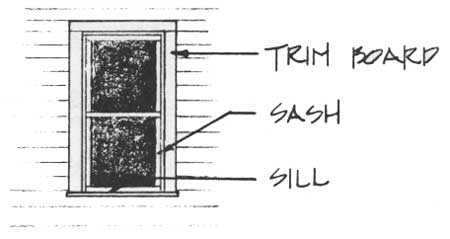
2 Over 2 Sash — A double hung sash design where each sash has two panes of glass, separated by a mullion.
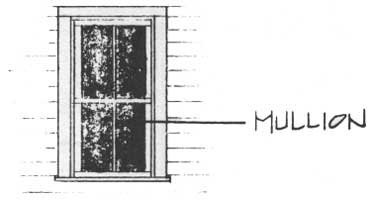
SHED ROOF
A roof shape having only one sloping plane.

SHIPLAP SIDING
A type of horizontal wood siding, with one edge rabbeted to make an overlapping joint.
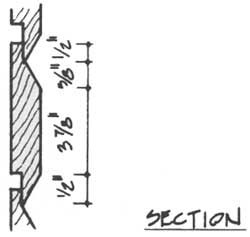
TRANSOM
A small window above a door or another, larger window.

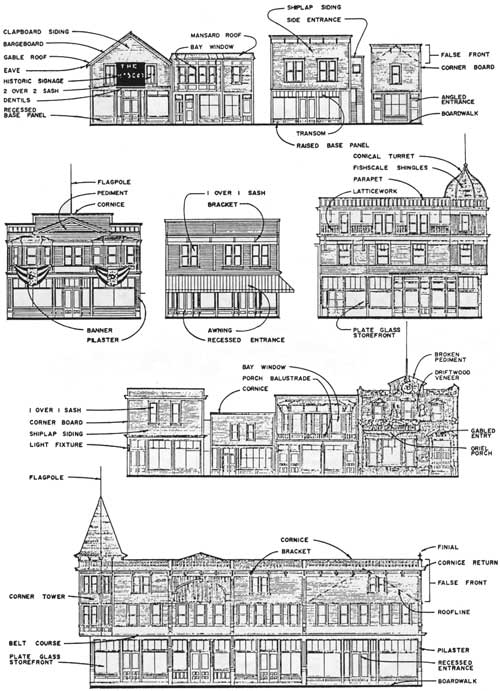
|
| (click on image for a PDF version) |
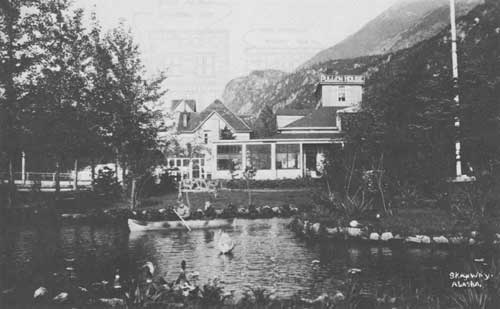
|
| Ornamental garden on the Pullen House grounds, in about the 1920s. |
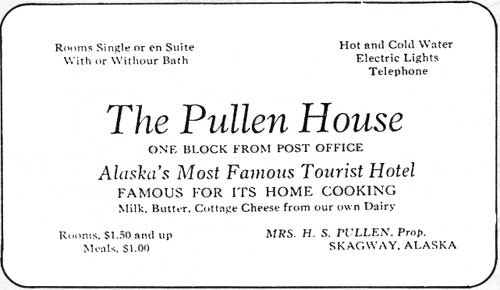
| <<< Previous | <<< Contents>>> | Next >>> |
klgo/hpd-36/chap5.htm
Last Updated: 06-Aug-2009